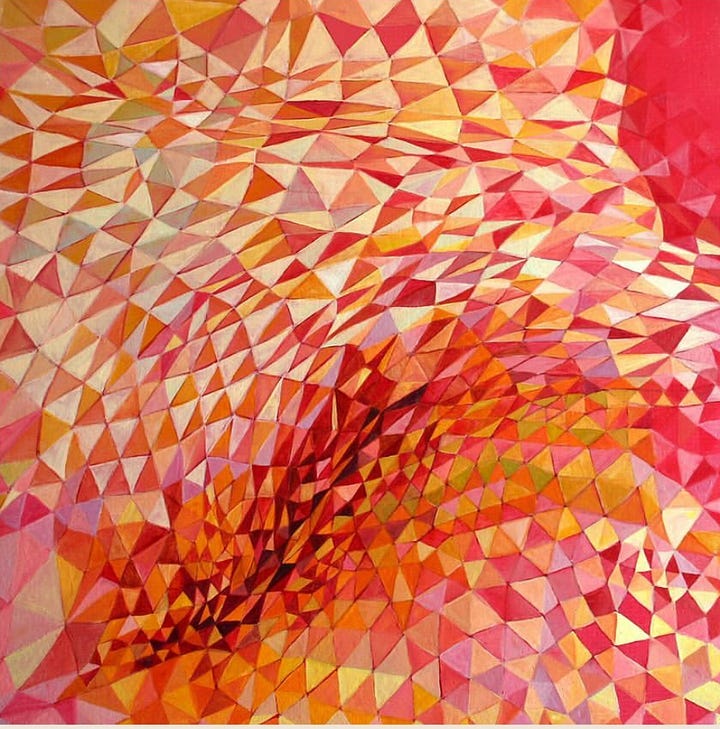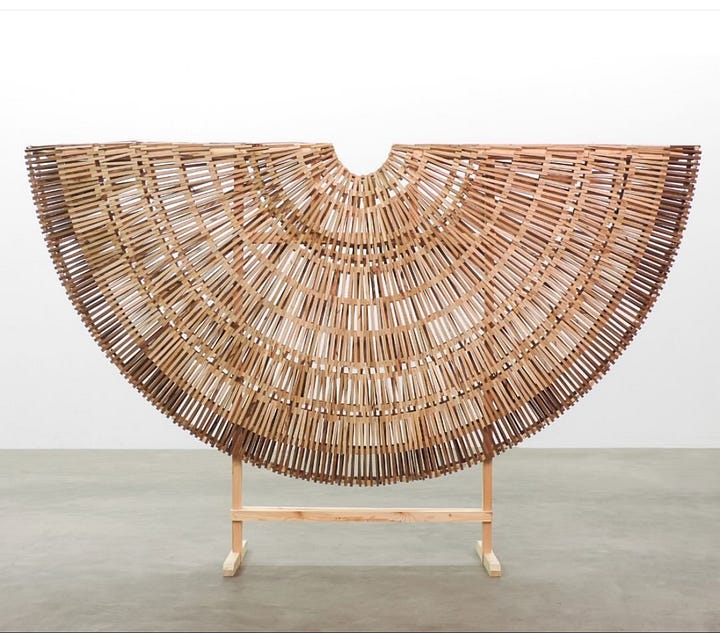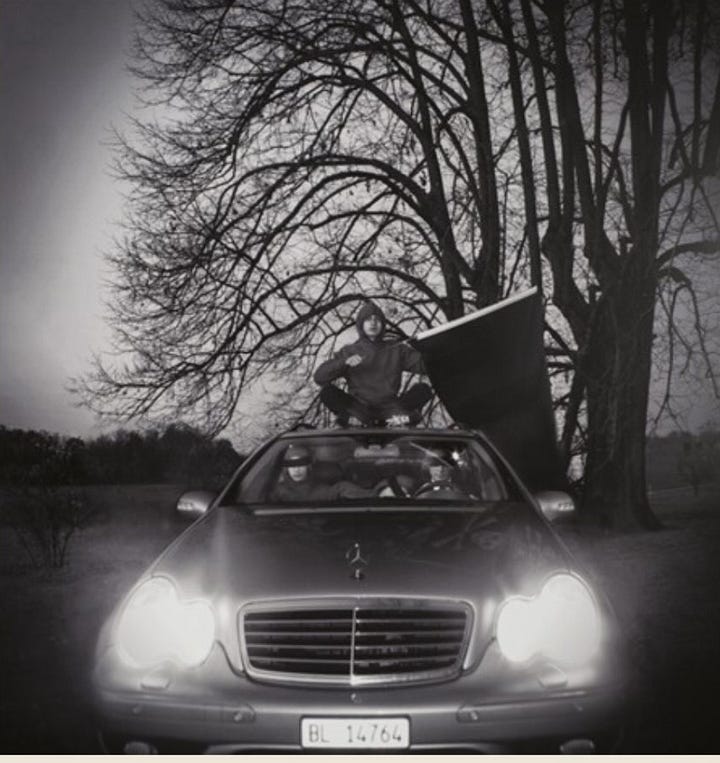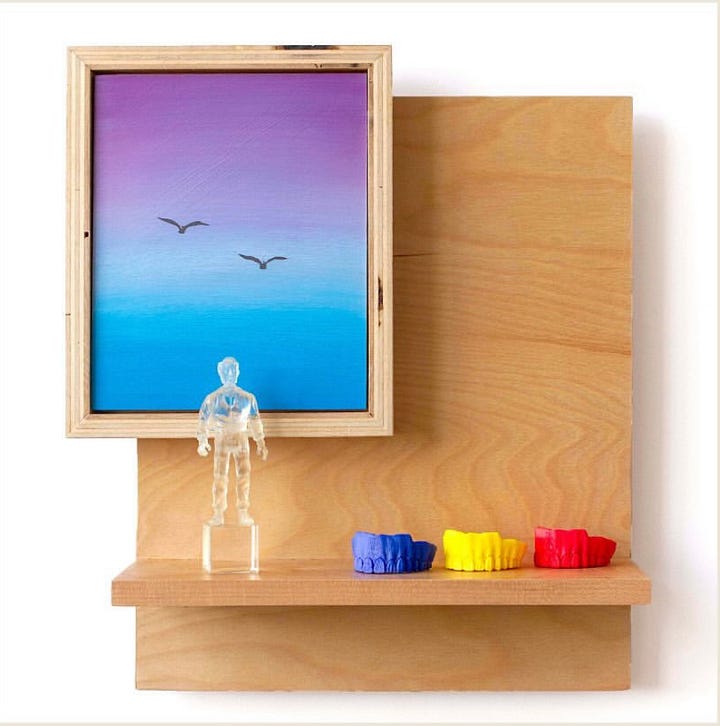What makes an artwork valuable?
There's a misleading belief within the art market that the most expensive art is also the most important art. Could that be beginning to change?
Hello and welcome to the latest edition of the Priceless newsletter. I’ve been thinking a lot about price and value in the art market recently, so I wanted to start by telling you about the inaugural Zero Art Fair, which took place this summer in Elizaville, New York, during Upstate Art Weekend. The next one will be held in June next year in New York City.
It’s pretty radical concept. Collectors can take home artworks that are exhibited for free, as long as they sign a ‘store-to-own’ contract with the artist, which includes a five-year vesting period before ownership is transferred to them. During those five years, the artist has the right to sell the work, or borrow it for an exhibition. After ownership is transferred, the contract grants the artist 50% of the sale price if the work is later sold, and a 10% royalty on all subsequent resales.
The idea is that participating artists can clear some of their inventory of unsold works, freeing up valuable and expensive studio and storage space, without letting go of their works’ potential value. And collectors can have some great art in their home at no cost to them. By the end of the two-day event in Elizaville, collectors had taken home 178 wall-based artworks and sculptures by 83 different artists.




The fair, founded by Brooklyn-based artists Jennifer Dalton and William Powhida, also aims to counter a key myth in the art market – that fine art is scarce – and to question what it is that makes an artwork valuable. In a press release, Dalton and Powhida said that “while it is not a sustainable model for artists to give away more than a small fraction of the artwork they create, the fair exists in part to remind the art world that the retail prices within the art market are a fiction for most working people, including artists themselves.”
Challenging art market myths
The global art market has a vested interest in maintaining this fiction, and in presenting the most expensive art as the most important art – artistically, culturally, or historically – in order to justify its multi-million-dollar price tag.
You can see this in the reverential language that auction houses use to describe their top lots; the way in which they send these artworks on round-the-world tours of their global showrooms so that visitors can view them in several continents before they come to auction; and in the large number of hyperbolic articles written about the most expensive art sold.
This positive feedback loop focuses much of the attention of the biggest collectors on a very small group of artists, confining most of the dollar value of art sales to the very top of the market.
The 10 best selling post war artists at auction, from Artnet’s recently published 2024 mid-year report.
This is damaging for a couple of reasons. Firstly, because the idea that buying this so-called ‘blue chip art’ is always a good investment is false, even though, as I’ve written before, fractional art exchanges that offer regular investors the ability to buy exposure to this sort of art will try to persuade you otherwise.
The art market’s preoccupation with a small group of artists is also damaging because it starves a lot of the art world of attention. As Melanie Gerlis wrote in The Art Newspaper last year, while art collectors focus on a “shrinking pool of market-approved art to trade”, the ecosystem that keeps the art market alive is starved of cash, because art school funding is floundering. The same dynamic means that fewer artists can make a living selling their art, which locks talent out of the art world and makes the art market even more top-heavy and overly reliant on a relatively small number of high value sales.
Navigating a downturn
Right now, the art market is going through a rocky patch, as higher interest rates and geopolitical uncertainty have spooked buyers and sellers. Artnet’s recently published mid-year report found that fine art sales at auction fell 28%, to $5.05 billion, in the first half of 2024 compared to the same period in 2023, with sales down in all price categories.
Estimates for artworks heading to auction are dropping and lots are being withdrawn – including Event, a Brice Marden diptich that was estimated to fetch $30 million to $50 million at Christie’s in May. Some sellers are selling at a loss, occasionally a pretty massive one, as Katya Kazakina just reported for Artnet. The owner of the silkscreen Bullet Hole, 2006 by Nate Lowman bought it for $197,000 at auction in 2013, but sold it for $28,000 at Phillips last month. The speculators that drove up the price of ultra-contemporary art in 2022 are also selling those works well below their previous highs.
Event by Brice Marden (1938-2023), oil on linen in two parts, which was estimated to sell for $30 million to $50 million at Christie’s in May before it was withdrawn. Photo credit: Christie’s.
A changing market
But if the current downturn in the art market has a silver lining, it’s that collectors are no longer chasing the most coveted art trophies and consequently driving up prices. Instead, they are looking for value, diversity and quality. They are developing new relationships with artists and sometimes buying directly from their studios. They are looking for good deals when works are resold at auction. They are investigating new art fairs and diversifying their collections with more women artists and artists of color. In the process, they are discovering art and artists that are new to them.
These are habits that all art buyers can emulate, because as I wrote in my last newsletter, you can acquire incredible fine art at all price points if you do your research, or in the unique case of the Zero Art Fair, for no upfront cost at all. As artist Bob Szantyr said of his experience participating in the fair, “It was the first art event I'd been to where it seemed everybody was genuinely excited to be there – they were talking about the work they love and their excitement to bring it home."
The Zero Art Fair may be a pretty radical experiment, but its message is important – that fine art is all around us. Eventually, the cyclical art market will bounce back and a new chase will begin for the most expensive artworks. In the meantime, if more art buyers discover and take home new art that they love and value, then collectors, artists and the art market will all benefit.
This newsletter is free, so I’d love it if you could subscribe if you haven’t already. If you’d also like to make a small donation to support my work, I’d be very grateful, and you can do so through buymeacoffee.com. Just click on the button below.
Thank you for reading! Until next time!
News in brief
Although it’s a step in the right direction, the Federal Reserve’s recent half percentage point cut in interest rates in the U.S. is unlikely to significantly alter the art market’s current weakness, according to ARTnews, particularly with the presidential election fast approaching. High interest rates have continued to hurt the global art market in 2024, with buyers grappling with a higher cost of borrowing, including against art assets.
The value of sales in the art market’s ultra-contemporary segment fell the most in the first half of this year, according to Artnet’s mid-year report, dropping 39% over the same period in 2024. By price bracket, the value of art sold at auction between $1 million and $10 million contracted the most, by 40.9%, while sales of artworks that cost $10,000 and under fell the least, by 8.6%.





I am no expert on contemporary art but, if you look across the span of collecting as a whole, there are all kinds of fascinating highways and byways that are ignored. One of my passions is for wallets, purses and messenger bags from 17th c onwards, which are finely created and often beautifully embossed. You really are holding history in your hands. What would you consider to be one of their equivalents in the world of contemporary art, exquisitely rendered, attractively priced but slightly off the beaten track?!